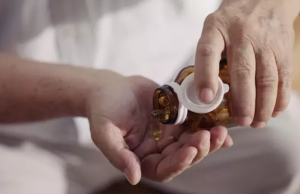Have you ever wondered why some women are born with naturally large breasts while others stay small? While genetics definitely play a role, there are other factors that come into play. And if you think about it, most body parts, such as hands, feet, arms, legs, eyes, etc. stop growing at one point, but breasts are a different story. A woman’s breasts will usually change size and shape throughout her life.
What factors determine breast size and shape? Here are some factors that mostly affect the changes in the body differently, in the same age

The family history
Your genes are more likely to predict your breast baseline, but not your size as well. “Women often are born with their breast size, but it can change in their lifetime,” states Nazanin Khakpour, M.D.,a surgical oncologist specializing in breast cancer at Moffitt Cancer Center.
If your mother and sister have big breasts, it’s not a guarantee that you will also, but you’re more likely compared to some girl who comes from a family of women with smaller breasts.
Your weight
Depending on your weight, you notice changes in the size of your breasts. Probably, you notice the changes on your breasts at the first place. Because breasts are made up of supportive tissue, milk glands and pretty much, a bunch of fat, it’s hard to tell the actual size of breasts at girls who are overweight. Also, the amount of different tissue differs from person to person – some have more fat tissue than others, who have more supportive tissue.
The type of exercise
Have you ever seen a swimmer or ballet dancer with big breasts? Also, lifting wright, doing push-ups and other pectoral exercises will make your breasts look flatter, because you turn tissue into muscle.
Doing too much exercise can flatten the supportive and fatty tissue of the breasts, but regular and “normal” exercising can actually make your breasts to look fuller, lifting a certain part of the fatty tissue who turns into muscle.
Menstruation
A woman’s menstrual cycle can have distinct effects on the size, shape, and texture of her breasts. As you get closer to your period, an increase in progesterone production can cause swelling and even soreness, prompting women to wonder if it’s them or if their boobs got a bit bigger.
Age
Even if you never have children, your breasts during menopause will not look the same as they did at 18. When you enter menopause, you’ll go through hormonal changes, which will affect the size and shape of your breasts. When the body produces less estrogen, the connective tissue in women’s breasts loses elasticity. All breasts eventually become less perky as women age, and it’s usually due to a decrease in skin elasticity and stretched ligaments.
Pregnancy
Breasts change during pregnancy and postpartum; it’s a fact of life. It’s common for even an A-cup to grow several cup sizes during pregnancy due to increases in progesterone. If you decide to breastfeed, they can continue to swell after the baby is born, but they should go back to their normal size (not necessarily their old shape) about six months after you stop nursing.
Birth control
“The Pill” can actually make your breasts look bigger, because of the water retention in your body. Also, the pill can make some disbalances in the hormones and glands, so this impact of bigger breasts will not be permanent, for sure.
At the end, just to say that most of the variation in breast size is due to a woman’s amount of mammary and adipose tissue. Physically speaking, the best prediction factor of your breast size would be your weight and body type.
Thinner women usually have smaller breasts, and vice-versa. The stage of development in puberty can also play a role, but that factor is also connected to body shape and size: again, thinner girls tend to start growing breasts slower or maybe even later.
















